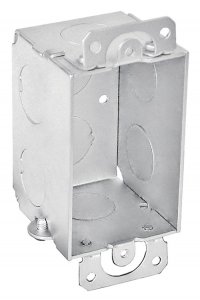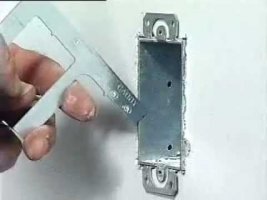jar546
Forum Coordinator
In walls that are fire-rated, who looks at installations like this?
This is a cut-in box. It is seen in a lot of commercial fit-outs where they fish new MC cable to add outlets.
Did you know this is a violation? Not directly in the NEC but from UL 263 as metal electrical boxes in fire-rated walls are required to be securely attached to a stud. In this case, a cut-in box is not attached to a stud.


This is a cut-in box. It is seen in a lot of commercial fit-outs where they fish new MC cable to add outlets.
Did you know this is a violation? Not directly in the NEC but from UL 263 as metal electrical boxes in fire-rated walls are required to be securely attached to a stud. In this case, a cut-in box is not attached to a stud.


